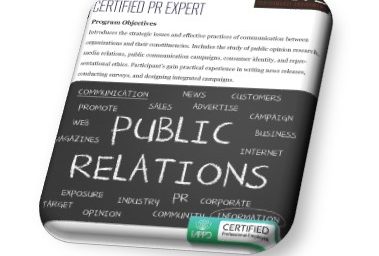Certified Public Relations ExpertsThe public is the only critic whose opinion is worth anything at all. Mark Twain
Welcome to the Networking and Public Relations workshop. In this workshop, you will get knowledge you need to manage effectively your image and value by forming solid networks through strategic communication planning.
. Effective networking is essential for day-to-day business or for those times when you are actively pursuing job opportunities.
Networking and public relations is the most successful method of communicating your value to those around you. Furthermore, good networking skills enable you to tap into those relationships you already have and increase the scope of your network. This workshop is designed to give you practical teaching and hands-on tools that will get you networking once you complete this course.
Making a Great First Impression
In order to do this you should use the Five B’s. The Five B’s are the following:
- Be on time: when you are on time, you demonstrate to the other person that you care about their time and value them.
- Be yourself: when you are yourself, you come across sincere and show you want to build an honest relationship with the person.
- Be positive: when you are positive you create an inviting environment. When you have a negative attitude, people will want to drift away from you.
- Be courteous: when you are polite and courteous, people will remember this aspect and create a lasting positive impression.
- Be brief: when you are talking, avoiding taking too much time. Being too talkative may be seen as a negative trait and this could hurt your first impression.
Gauging the Impending Crisis Level
Here are some simple steps to gauging a crisis when it occurs:
- What happened? Your goal here is to determine what actually happened. Ask several resources and contacts. Take notes and compare the information. If you see discrepancies then the crisis has not been clearly assessed yet. Continue until you obtain consistent answers.
- Why did it happen? The reasons for the crisis may not be easy to determine. However, gaining this information could avoid more problems to occur and reduce further damage.
- Who is impacted? This is essential to obtain because anyone involved in the crisis will need some form of communication management to happen. If customers are affected, then you may need to make an announcement to the public. If employees are involved, you may need to contact their families.
- What are the ramifications? Once you obtain the first three pieces of information, you will need to sit down and determine the ramifications. Here are some things to consider:
-
- What is the legal or liability involved.
- What is the cost of correcting or dealing with the crisis?
- What damage to the company image will occur?
- What affects does the crisis have with the ability for the company to run normally?
- Who is liable? Determine if your company or someone else is liable and seek legal counsel as soon as possible.
How Information Will be Distributed
The basic communication plan includes the following elements:
- Party to contact
- How should they be contacted (ex. email, letter, phone or in person)
- What should be communicated
- When should they be communicated
- Who is responsible or owner for communicating to that party
- The date this party was actually contacted


